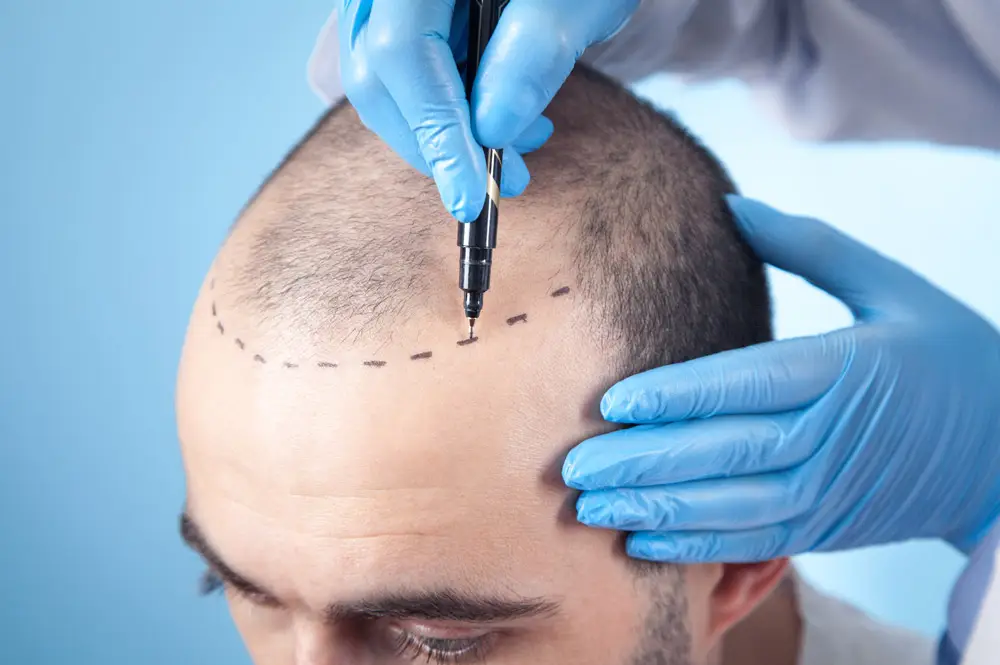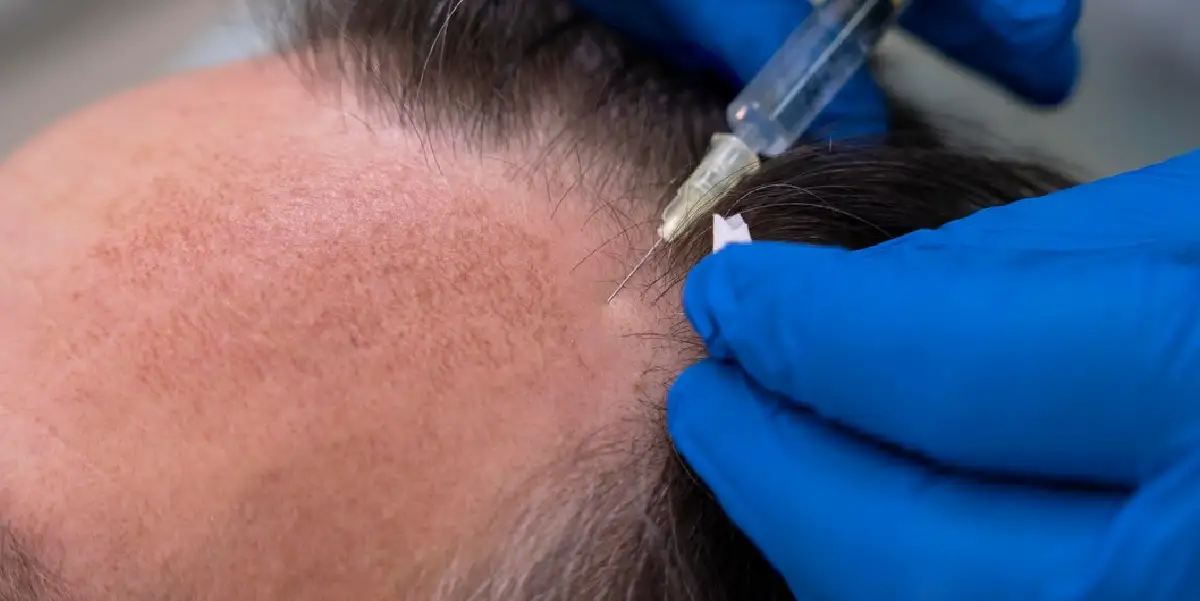Frontal Hairline Design: Stepwise Approach
- By Harleys Clinic
- Aug, 02 2023
Dr Sumit Agrawal will brief the multiple steps to design a natural hairline as per his experience of 15yrs. We have found this approach useful in creating Aesthetic & Natural looking hairlines. He refers to all the standard protocols & measurements described for the markings. The following description depicts the step-by-step approach to designing a natural hairline as per the patient's ethnicity.
These steps provide the initial framework and are fine-tuned as per the patients' requirements. We prefer to discuss with the patients while marking the hairline design. Although there are other ways to design hairlines, Dr Sumit Agrawal, the best hair transplant doctor in Mumbai, has innovated the best that suits the patients' interests. The steps are described as follows:
1. Draw the Artistic Hairline Design: Before heading for the surgical procedure, the drawing of the hairline is performed based on multiple factors along with the customized needs of the patients. Marking of the anterior border, lateral border, and frontal-temporal angle should be done. The extended hairline region should be drawn, including the transition zone, defined zone and frontal tufts. If the patient wants a lower hairline, draw in the widow's peak and move the front temporal angle slightly forward (dotted lines).
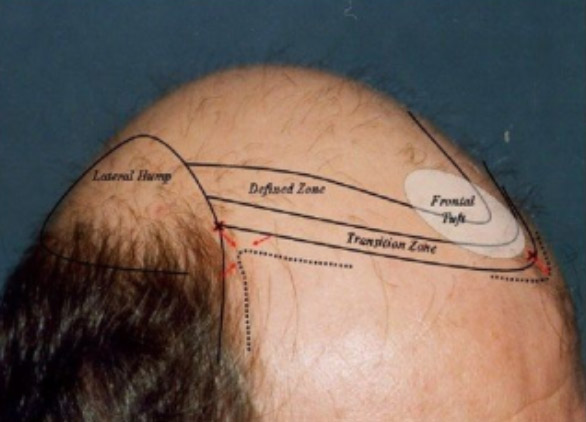
Fig 1: Hairline design
In Fig 1, the initial markings have been shown, which are done to design the hairline. The transition zone, defined zone, frontal tufts, and lateral hump are the critical areas mentioned.
2. Make initial incisions as per the drawing of the anterior border of transition zones: These initial marking incisions are made around 1 cm apart and follow a zigzag pattern across the marked hairline. Some follicular units are transplanted anterior to and posterior to the defined line, creating irregularity and a more natural appearance. These initial incisions ensure you are not losing marking in preparing the hairline. This also helps in playing safe with this crucial area deducting the chances of losing the initial design.
3. Following the marking, incisions must be made in the designed zone before proceeding to the next step in the transition zone: According to Dr Sumit Agrawal, who aims to make the perfect hair transplant hairline design, the better outcomes can be attained by making incisions in an orderly manner. Incisions in the defined zone should be started first and then moved anteriorly to the more crucial transition zone. It helps in giving more control over the shape & irregularity of the Transition zone & avoiding flat hairline. It could be directly compared to the “wall paintings”, where the central portion is painted first, followed by the outlines, which give a cleaner and arranged look. The incisions in the defined zones are densely placed around 45 follicular units/cm2. There should be no regular pattern, and the orientation of the Incisions should be randomly placed to create a staggered pattern and even distribution of hair follicular units.
4. Make the framework to design the hairline in the transition zone: Once the incisions in the defined zone have been performed, it should be followed by making the incision ahead of it at its junction with the transition zone before reaching the transition zone properly. These incisions are made in an irregular wavy pattern of variable depths. The shape of these incisions in the transition zone represents an elongated triangle, each containing 6 – 8 incisions. The base of this triangle lies on the defined zone. This forms an initial framework of irregularity in the transition zone, connecting to the irregularly spaced marking incisions anteriorly. This zone comprises intermittent hair density, which makes this area look more natural.
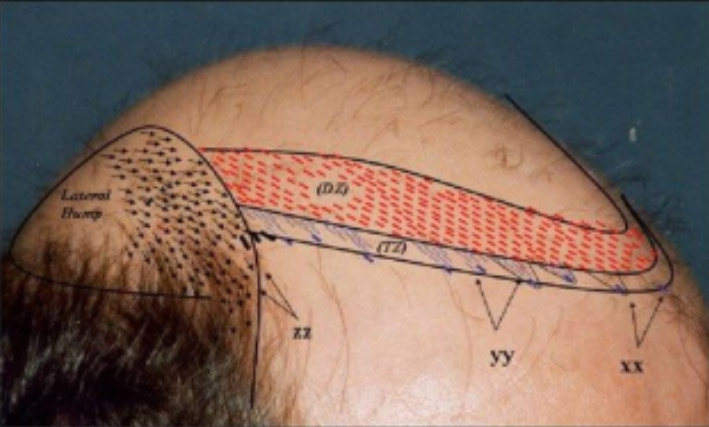
Fig 2: Hairline Incisions
xx represents the marking incision at the anterior boundary of the transition zone in Fig 2. yy symbolizes the incisions that connect the transition zone and defined zone marking incisions. To demonstrate suitable angle and direction, zz represents the incisions in the fronto temporal angle and lateral hump area utilizing the existing miniaturized hairs.
5. Prepare initial marking incisions at fronto- temporal area: The fronto-temporal angle incisions are guided by existing miniaturized hairs on both sides of the frontotemporal region. The angle and direction of the hairs to be planted are determined by the existing hairs. The markings are done alongside the existing miniaturized hairs using them as landmarks.
6. Multiple passes are made, keeping the pattern and basic framework intact: Once the framework is created, multiple passes and artistic skills are used for refinement. Multiple passes are made in the Defined zone, which helps in increasing the density. In the Transition zone, it is preferable to make more incisions in the Triangle than between the Triangles, ensuring enough hair density in that irregularity. The irregularity and staggered pattern helped to provide naturalness and adequate density to the Frontal Hairline zone.
7. Transplant the graft by Selective distribution of Grafts according to the location: The hair follicles are planted based on the principle of ideal selection of grafts in the Frontal hairline zone. This will be discussed in detail in our next Frontal hairline zone blog.
8. Use the “stick and place method” to fine-tune the hairline: After transplanting the grafts successfully as per the requirements, 100-200 grafts are saved for final brushing up to provide a natural hairline. These grafts are then artistically planted at points where they are needed to make the hairline look very natural. Hair density in the extended hairline region is assessed for appropriateness and aesthetically attractive results.
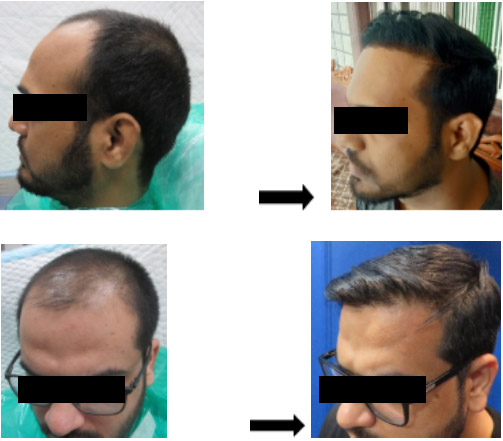
Fig 3: Artistic Hairline Design Before After Results
The fig 3 represents the before and after (1 year follow-up) of the patients after following the similar steps explained above.
Dr Sumit Agrawal is well known for providing an effective hair transplant in Mumbai & Dubai. He is renowned for his surgical skills and artistic approach to designing the best possible hairline, which patients of all ethnicity & country, including Bollywood & Hollywood celebrities, have appreciated.
If you wish to have a desirable natural hairline, feel free to book an appointment with Harleys Clinic in Mumbai & Dubai.

